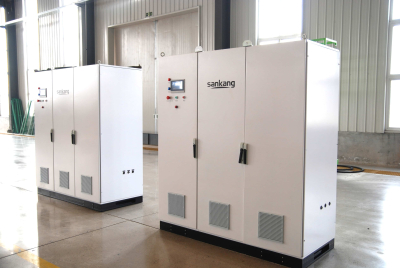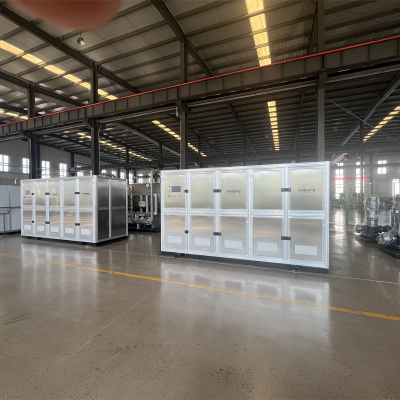Effect and Application Prospects of Ozone Generators in Flue Gas Purification
# The Effect and Application Prospects of Ozone Generators in Flue Gas Purification
With the acceleration of global industrialization, pollutants such as nitrogen oxides (NOx), sulfur dioxide (SO₂), and volatile organic compounds (VOCs) in industrial emissions have become major causes of air quality deterioration. Traditional flue gas purification technologies, such as selective catalytic reduction (SCR) and selective non-catalytic reduction (SNCR), face issues such as narrow temperature windows, catalyst poisoning, and high risks of secondary pollution. Against this backdrop, ozone generators, with their strong oxidizing properties and capability to treat multiple pollutants simultaneously, are gradually becoming a direction for technological innovation in flue gas purification.
## 1. Technical Principles and Core Advantages of Ozone Generators
Ozone (O₃) has a high redox potential of up to 2.07 V, second only to fluorine, and its generation depends on corona discharge technology: a high-voltage electric field breaks down air or oxygen, causing oxygen molecules (O₂) to dissociate and recombine into ozone molecules. This process allows precise control of ozone concentration and output by adjusting voltage, current, and gas flow rate.
Compared to traditional technologies, ozone generators have three core advantages:
1. **High-efficiency denitrification and synergistic treatment capability**: Ozone can oxidize low-valence NO into high-valence nitrogen oxides such as NO₂ and N₂O₅, which are easily soluble in water and can be combined with subsequent wet scrubbing processes for efficient denitrification. For example, the high-concentration ozone generator (ozone concentration 180-300 mg/L) developed by Shandong Zhiwei in the treatment of sintering flue gas at steel plants achieved an NOx removal rate of over 80%, while simultaneously removing SO₂ and mercury, significantly improving overall purification efficiency.
2. **Wide temperature adaptability**: Ozone oxidation reactions can occur within a temperature range of room temperature to 200°C, without the need for additional heating or cooling of the flue gas. In a municipal solid waste incineration plant, for instance, the combination of ozone generators with activated carbon adsorption processes maintained stable operation despite fluctuations in flue gas temperature, achieving an NOx removal rate of 75% without consuming large amounts of ammonia water or limestone as reducing agents.
3. **No secondary pollution and low energy consumption**: Ozone decomposes into oxygen after the reaction, leaving no chemical residues. The equipment has a simple structure, occupying only about one-third of the space of an SCR system, and intelligent variable frequency technology can reduce energy consumption by more than 30%. A case study from a chemical company showed that the operating cost of the ozone denitrification system was 25% lower than that of an SCR system, with maintenance intervals extended to six months.
## 2. Typical Application Scenarios and Empirical Results
1. **Steel Industry**: Flue gas from the sintering process is characterized by high temperature, high dust content, and large fluctuations in NOx concentration. After implementing ozone generators in a large steel plant, dust concentration was first reduced through pre-dusting, then NOx was oxidized using ozone, and finally multi-pollutant removal was achieved through a wet desulfurization tower. Operational data indicate that when the system runs stably, NOx emission concentrations are below 50 mg/m³, meeting ultra-low emission standards, without significantly affecting the pH value of the desulfurization slurry.
2. **Waste Incineration**: Waste incineration flue gas contains complex components such as NOx, dioxins, and acidic gases. After introducing ozone generators at a waste incineration plant in Shanghai, ozone oxidized and destroyed the molecular structure of dioxins while converting NO into NO₂. After subsequent treatment with an activated carbon adsorption tower, the dioxin emission concentration dropped to 0.05 ng-TEQ/m³, and the NOx removal rate increased to 78%, far exceeding EU standards.
3. **Chemical and Non-Ferrous Metallurgical Industries**: A chemical company dealing with mixed exhaust gases containing NOx and VOCs adopted an ozone oxidation catalytic decomposition process, achieving a dual effect: 92% NOx removal and 85% VOCs removal, while operational costs were reduced by 40% compared to traditional RTO incineration technology.
## 3. Market Prospects and Policy Drivers
Global environmental regulations are tightening NOx emission limits continuously. China’s "Implementation Plan for Ultra-Low Emission Retrofit in the Steel Industry" requires that NOx emissions from sintering machine flue gas do not exceed 50 mg/m³, while the EU’s "Industrial Emissions Directive" has tightened NOx limits for key industries to 100 mg/m³. Against this backdrop, the market for ozone generators shows explosive growth:
Market Size Forecast: By 2025, the global market for ozone generators in flue gas denitrification is expected to reach $1.2 billion, with a compound annual growth rate of 15%. The Chinese market is expected to exceed 8 billion RMB, accounting for more than 60% of the global share.
Expansion of Application Areas: In addition to traditional industries such as steel, power, and cement, ozone generators are increasingly being applied in low-temperature flue gas treatment scenarios such as glass melting furnaces, ceramic kilns, and biomass boilers. For example, after implementing ozone denitrification, a glass factory achieved an 85% NOx removal rate at a flue gas temperature of 120°C, filling a low-temperature gap that traditional SCR technology could not cover.
Policy Incentives: China’s "14th Five-Year Plan" explicitly lists ozone oxidation technology as a key promoted environmental protection equipment, and local governments provide 30%-50% equipment purchase subsidies for companies adopting ozone denitrification. The EU’s "Green Deal" also includes ozone technology in its industrial decarbonization roadmap, promoting its evolution toward carbon neutrality.
## 4. Technical Challenges and Future Directions
Currently, ozone generators still face challenges such as low ozone yield, relatively high energy consumption, and insufficient material corrosion resistance. Future technological breakthroughs will focus on three main directions:
1. New Discharge Technologies: By combining dielectric barrier discharge (DBD) with pulsed power supplies, ozone concentration can be increased to over 500 mg/L while reducing energy consumption per unit.
2. Material Innovation: Developing titanium-based composite electrodes and ceramic insulating materials to extend equipment lifespan to more than 10 years.
3. Intelligent Control: Integrating the Internet of Things (IoT) and AI algorithms to dynamically match ozone dosage with flue gas components, optimizing operational parameters.
With its efficient, flexible, and environmentally friendly technical characteristics, the ozone generator is transitioning from a fringe technology to a mainstream solution for flue gas purification. With technological iteration and policy support, it is expected to capture over 30% of the global flue gas denitrification market by 2030, providing key technological support for improving global air quality.







